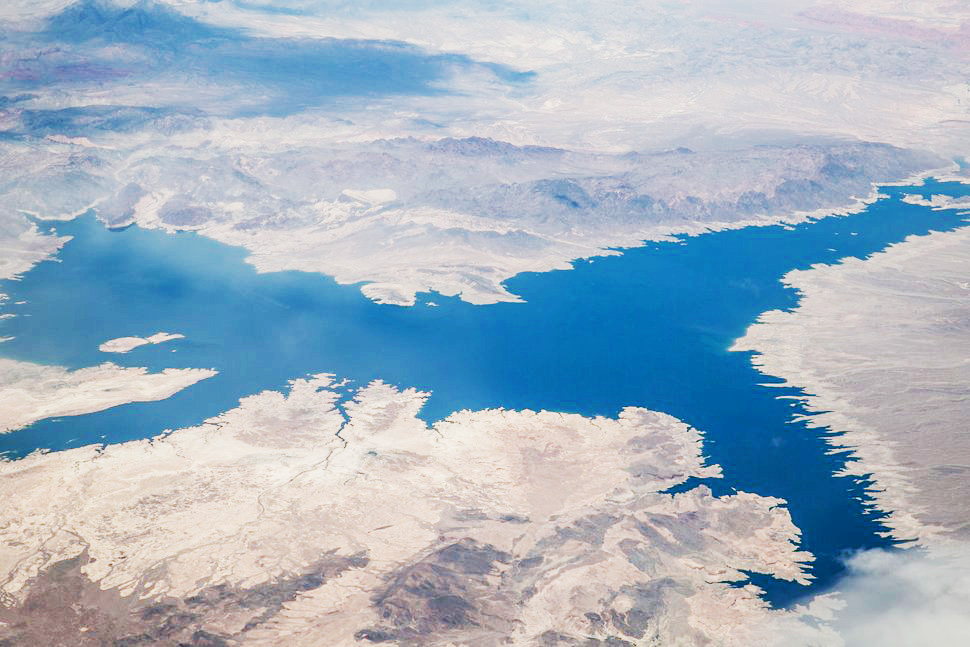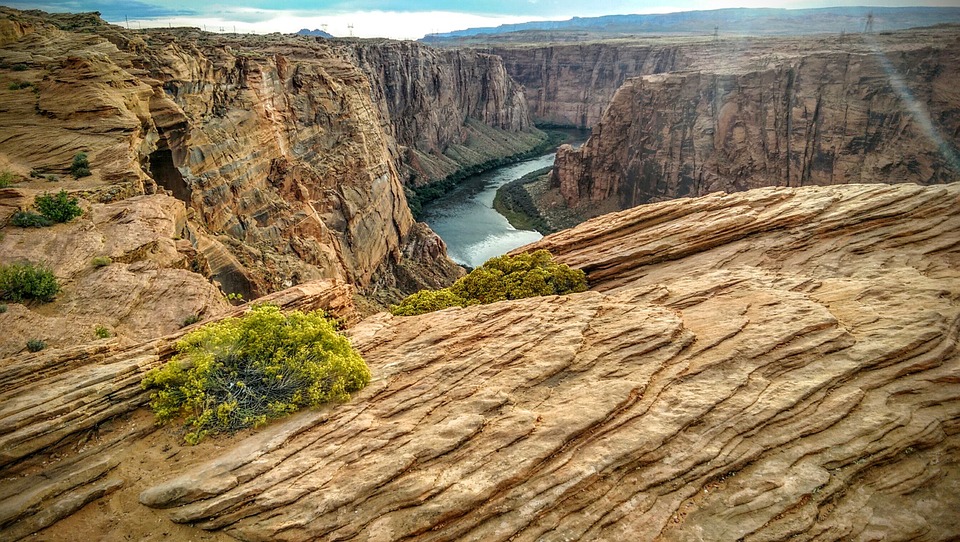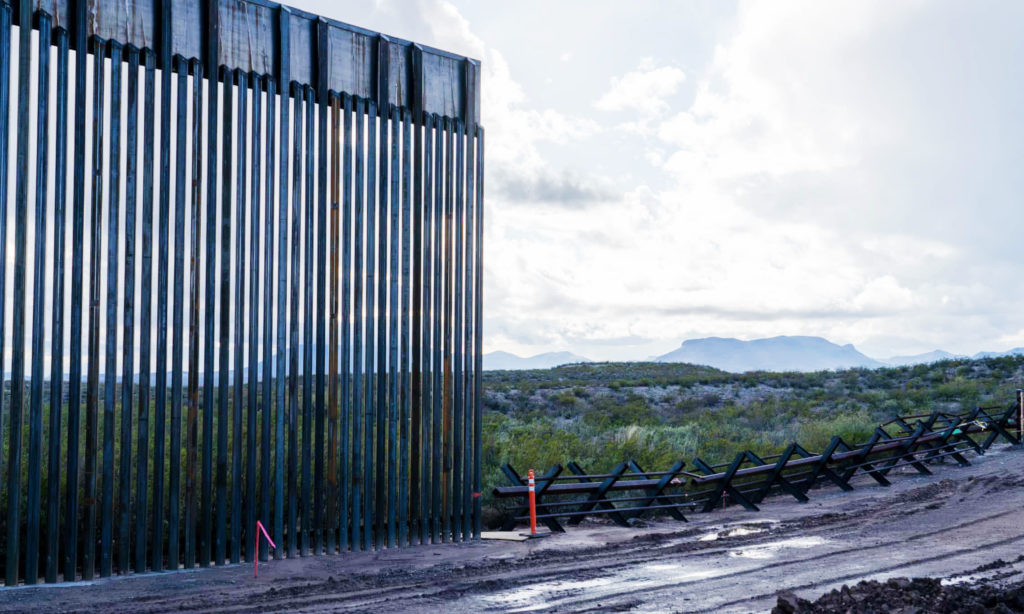No drought about it, Arizona, Pinal County at the water’s edge
By Phil Riske, Senior Reporter, Writer

Arizona’s Colorado River drought plan is the most significant piece of water legislation signed in nearly 40 years, said Gov. Doug Ducey after the plan was worked out during seven months of negotiations and just days before a federal deadline.
The drought contingency plan enables Arizona to join a larger shortage-sharing agreement with California and Nevada that will spread around the pain of expected water cutbacks, especially in Pinal County.
Yes, water is the story of 2019.
Related: Groundwater-guzzling demands of Trump’s border wall in Arizona threaten fish
The first cuts in water deliveries could begin in 2020

/GEORGE ROSE/GETTY IMAGES
The drought contingency plan lays out the states’ commitments to take less water from Lake Mead’s depleted reservoirs to reduce the risk of a crash. The plan has been praised, and the agreement also has drawn criticism as its critics voice concern about the plan’s promotion of more groundwater pumping in parts of the state. They say using state money to drill more agricultural wells in Pinal County, for example, will lead to declining aquifers.
Chuck Cullom, manager of Colorado River programs for the Central Arizona Project [CAP], has said the reductions will mean “eliminating the water that would have been available for underground storage, banking and replenishment.”
On the other hand, as stated in The Arizona Republic by Rose Law Group founder and president Jordan Rose, with Tom Galvin, and water attorney, “An alarming prediction about Pinal County facing a water shortage is a myth that’s based on outdated assumptions and incomplete data.”
The state’s groundwater law requires that new housing subdivisions in regulated areas need to show an “assured water supply” will be available for 100 years in order to be built.
Rules adopted by the Legislature in 1995 allowed developers to get certificates of assured water supplies by relying on groundwater, provided the groundwater would be replenished with surface water obtained subsequently by the Central Arizona Groundwater Replenishment District.
A report released in October detailed how the Pinal water management district has had to deal with new subdivision growth far beyond expectation and a time when developments would not have access to a real secure water supply by 2025.

Pinal has time to figure things out
The Pinal Active Management Area has enough water for the county to grow, but steps need to be taken to make sure there is enough water in the long-term future founding members of the Pinal Groundwater Task Force told a packed room of more than 100 members of the Pinal Partnership.
“Our backs aren’t up against the wall yet,” said Pinal County Supervisor Steve Miller. “We’ve got time to figure this out.”

“It’s not a simple yes or no answer,” said William Garfield of the task force and senior adviser to Arizona Water Company. “It’s really a problem of how we commit that water for projects that need to have an assured water supply in order to move forward. There is a real need for more water.”
The model doesn’t really take into account how quickly the shift from agricultural land use to residential and industrial land use is happening in the county, Garfield said. Homes and industries use less water than agriculture does. The state and county needs to find a way to shift grandfathered water uses from farmland that is slated to be retired to new residential and industrial developments.
All three task force members said they don’t fault Arizona Department of Water Resources [ADWR] for the assumptions in its model.
“They’re working within the system they have,” Garfield said, but the task force will need the best data possible to determine possible solutions to the county’s groundwater problems, he said.
He likened the situation to balancing a checkbook — the task force needs to know how much water is coming into and going out of the system, Garfield said. The task force needs that kind of data to determine the task force’s priorities and to come up with possible solutions.
He said he anticipates it would take about a year for the task force to sit down with all of the various stakeholders, water companies, developers, the agriculture sector and the Indian communities and come up with a list of possible long-term legislative or regulation-based solutions for the Legislature.
Why Pinal County is critical in the drought plan
Numerous witnesses with a stake in a drought contingency plan testified to what they say will be dire consequences if Pinal County doesn’t receive enough water from the Colorado River and from groundwater over the coming years.

Water shortage would shake the entire Pinal County economy, from the cost of food to the tax base, officials testified shortly before the drought plan was approved by the states and federal water officials.
Pinal County provides 63 percent of food and fiber in Arizona and beyond. Relying on less water is one thing, but if Pinal County is left in the lurch by the plan, 30%-40% of its crops could go fallow for a 2.3 billion loss of income to the Pinal economy.
“Your steak at Safeway will no longer be four dollars,” Chelsea McGuire of the Arizona Farm Bureau Federation told a state House committee as it debated a package of bills the Legislature hopes will satisfy the federal government mandate for a drought plan.
Several witnesses said water shortage in the county could cost farmers and other agricultural interests as much as 40% percent of their income.
After hours of hearing in January, the House Committee on Natural Resources, Energy and Water unanimously approved a package of bills to deal to enhance existing water law and to deal with water loss from the Colorado River. One bill provides needed funding for infrastructure projects in Pinal County, including drilling 17 new wells over three years at $800,000 per well. The new wells would be 11 percent of the total wells in the county.
Another bill increases to $9 million from $5 million for infrastructure and a $20 million state appropriation, which would be paid by the federal government.
In all, the county could receive $20-$25 million from the state, CAP and federal government to support well drilling.
Cities have complained about the amount of water Pinal County would receive under the drought plan, tapping into underlying tensions among suburban developers, homebuilders, ranchers, and environmentalists.
Pinal County Supervisor Steve Miller called Pinal County an economic engine, “not just a program for a few farmers.”
“We had a plan in place and we came to the table. We don’t think the state is after our water. I do see a reduction (in water) “but we’re going to keep agriculture in Pinal County.”
Opinion: An alarming prediction about Pinal County facing a water shortage is a myth.
Pinal County has plenty of water for the next 100 years. We just need to prioritize demand,” writes Jordan Rose and Tom Galvin for The Arizona Republic.
[W]e are trying to dispel a growing notion that ‘Pinal County is out of groundwater.’ In fact, Pinal County has plenty of water for today, tomorrow and 100 years from now.
Water conservation is a hallmark of agricultural endeavors
ADWR’s predictive model assumes how much water would be available roughly 100 years from today, in the year 2115.
Errors, even the slightest ones, in these projections could cascade into substantially faulty assumptions that affect water and economic interests today. That’s not a proper way of supervising water resources.
The water resources department’s recent findings concerning Pinal County is just a regulatory forecast that tries to estimate the amount of groundwater that will be available 100 years from today.It’s a policy, not a water availability, issue
However, we do believe some issues need to be addressed. There is a higher ‘want’ for groundwater than there are fully permitted lands. We believe that’s a regulatory and policy issue and not a water availability issue.
We have and are continuing to work on a series of solutions that we believe Arizona Department of Water Resources could support as commonsense answers to get all us to a “win-win” on water in Pinal County. For instance, we could design a sensible regulatory framework that prioritizes and compartmentalizes additional water “wants.”
Also, we should assist farmers who want to stop farming so that their lands could be converted to other uses that consume less water. And we should create voluntary programs to augment water supplies that can be paid for over time.
In addition, we fully support detailed, credible, long-term planning predictive modeling. That’s why the Pinal Partnership Water Resource Committee is working with the Bureau of Reclamation on a three-year study to incorporate realistic supply and demand projections.
Let’s work to correct a flawed model
Also, we take into account the climate impacts of the area and a universal review of the groundwater aquifer system. This study should provide us with a more accurate representation of what Pinal County’s water future will look like. Therefore, we will be better able to adopt and implement adaptation and mitigation measures to address potential supply concerns as they arise.

Photograph: Russ McSpadden/Courtesy Center for Biological Diversity











